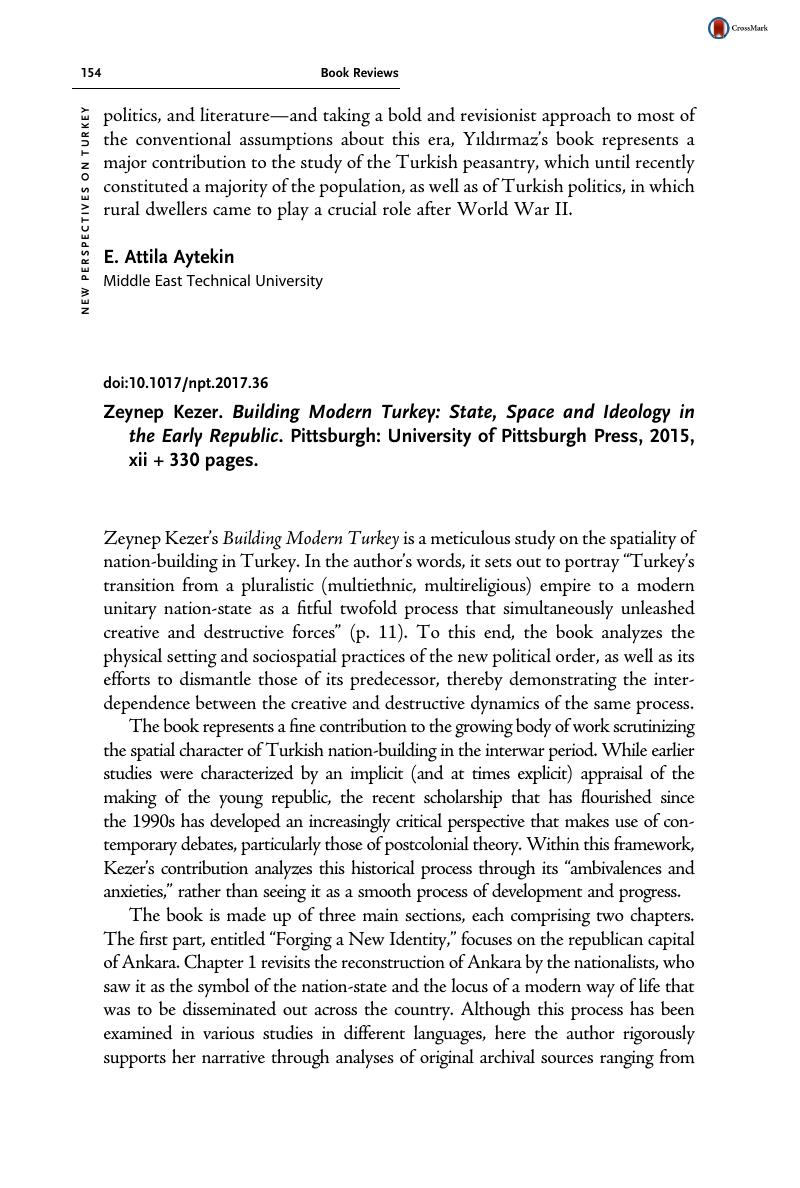No CrossRef data available.
Article contents
Zeynep Kezer. Building Modern Turkey: State, Space and Ideology in the Early Republic. Pittsburgh: University of Pittsburgh Press, 2015, xii + 330 pages.
Review products
Published online by Cambridge University Press: 07 November 2017
Abstract

- Type
- Book Reviews
- Information
- Copyright
- © New Perspectives on Turkey and Cambridge University Press 2017
References
1 Since the 1990s, Ankara has become the object of studies questioning the spatial aspect of Turkish nation-building. See, for instance, Jean-François Pérouse, “D’Angora à Ankara (1919–1950): la naissance d’une capitale” (Ph.D. dissertation, Université de Reims Champagne-Ardenne, 1994); Bernd Nicolai, Modern ve Sürgün: Almanca Konuşulan Ülkelerin Mimarları Türkiye’de 1925–1955, trans. Yüksel Pöğün Zander (Ankara: TMMOB Mimarlar Odası, 2011; original German edition, 1998); Sibel Bozdoğan, Modernism and Nation Building: Turkish Architectural Culture in the Early Republic (Seattle: University of Washington Press, 2001); and Ali Cengizkan, Ankara’nın İlk Planı: 1924–25 Lörcher Planı, Kentsel Mekan Özellikleri, 1932 Jansen Planı’na ve Bugüne Katkıları, Etki ve Kalıntıları (Ankara: Ankara Enstitüsü Vakfı, 2004). For a critical evaluation of this recent literature, see Bülent Batuman, “‘Early Republican Ankara’: Struggle over Historical Representation and the Politics of Urban Historiography,” Journal of Urban History 37 (2011): 661–679.
2 In addition to the works of Bozdoğan and Cengizkan cited above, see, for instance, Gülsüm Baydar Nalbantoğlu, “Between Civilization and Culture: Appropriation of Traditional Dwelling Forms in Early Republican Turkey,” Journal of Architectural Education 47 (1993): 66–74; Güven Arif Sargın, “Displaced Memories, or the Architecture of Forgetting and Remembrance,” Environment and Planning D: Society and Space 22 (2004): 659–680; Bülent Batuman, “Identity, Monumentality, Security: Building a Monument in Early Republican Ankara,” Journal of Architectural Education 59 (2005): 34–45; and Esra Akcan, Architecture in Translation: Germany, Turkey, and the Modern House (Durham and London: Duke University Press, 2012).




